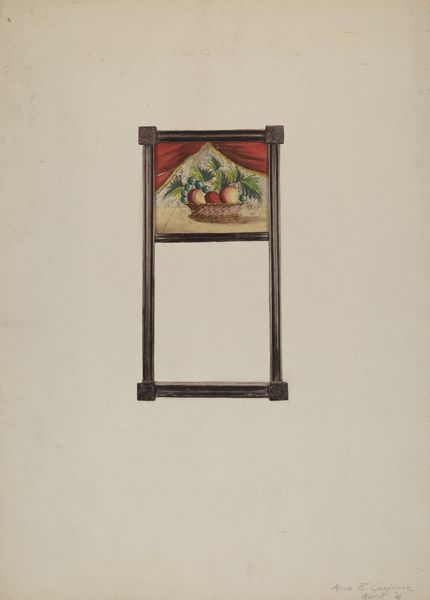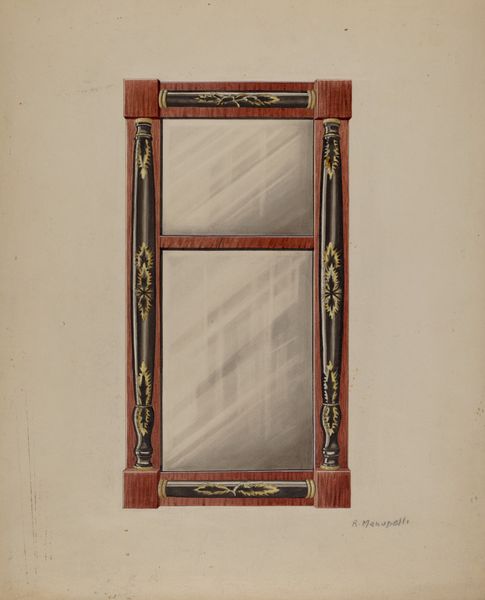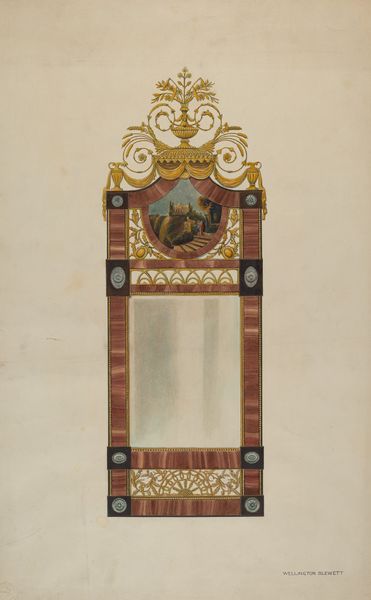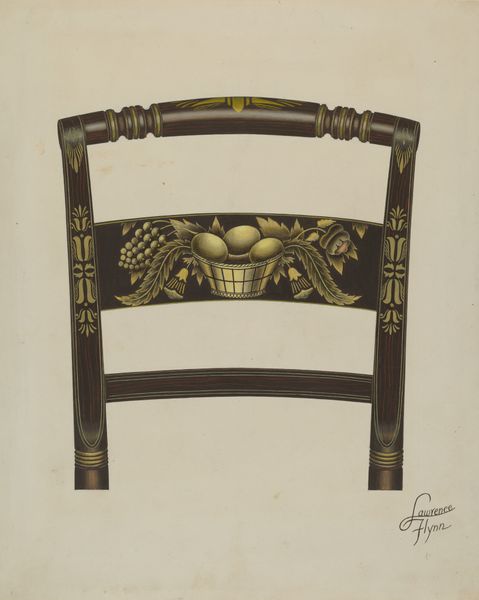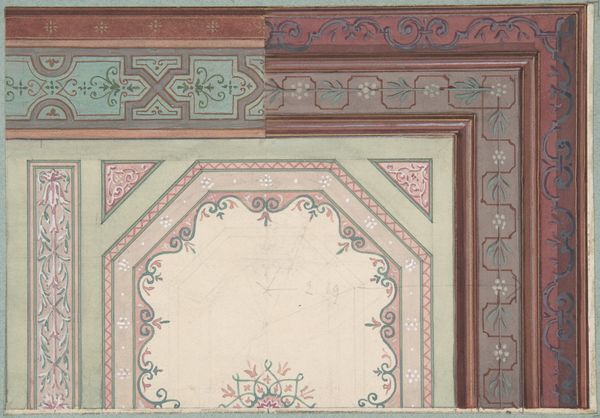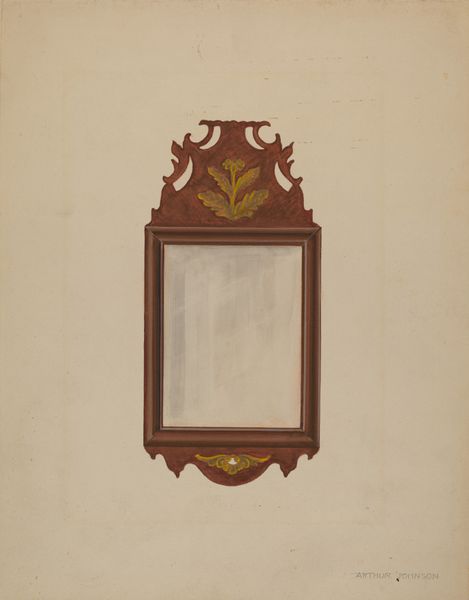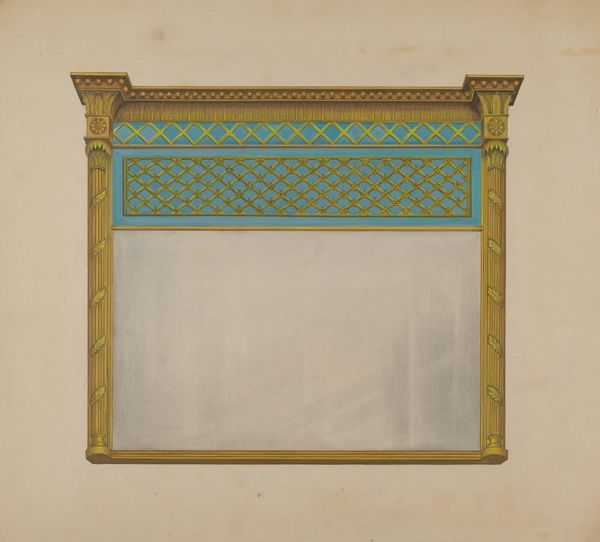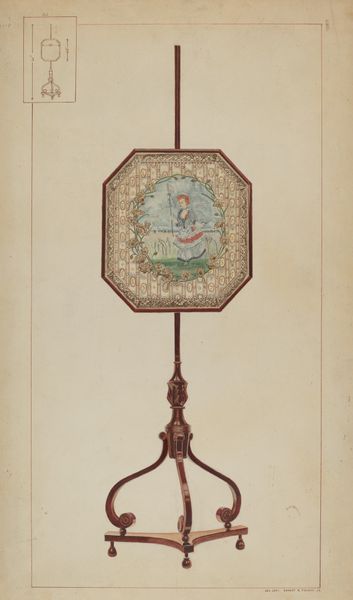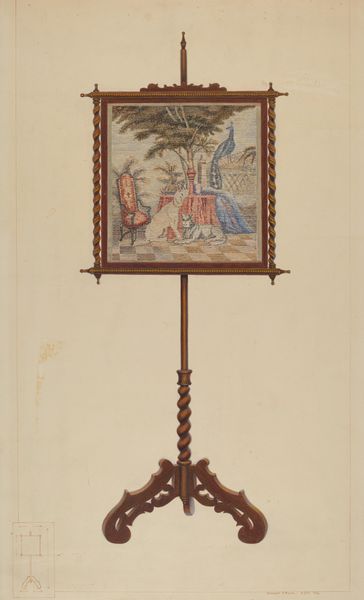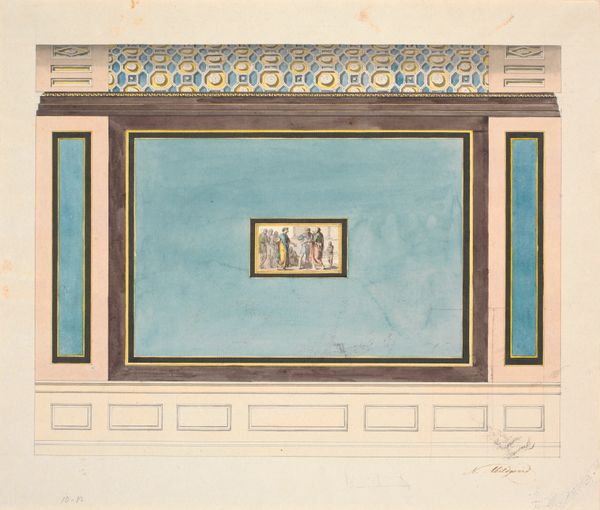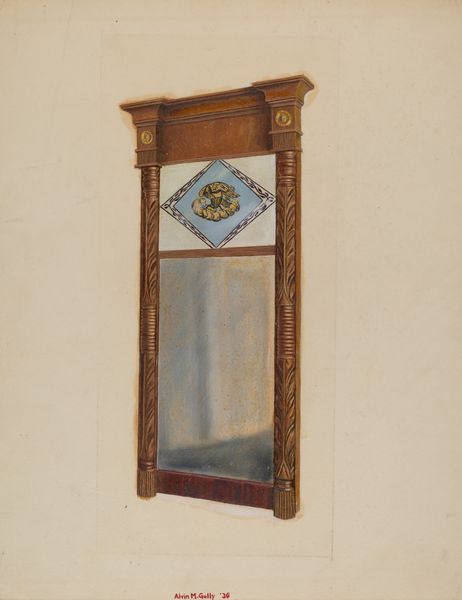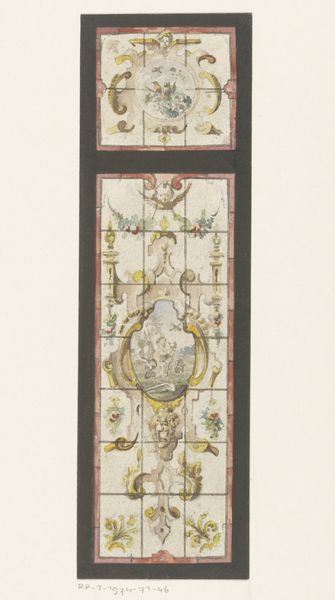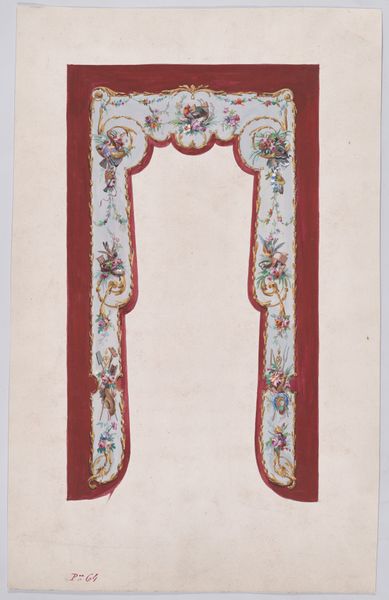
watercolor, sculpture, wood, pendant
#
sculpture
#
watercolor
#
coloured pencil
#
underpainting
#
sculpture
#
wood
#
pendant
Dimensions: overall: 45.9 x 35.7 cm (18 1/16 x 14 1/16 in.) Original IAD Object: 25 1/4"high; 12 3/4"wide; 1 3/4"deep
Copyright: National Gallery of Art: CC0 1.0
Editor: This is "Hand Carved Mirror Frame," circa 1939, by Rolland Ayres. The mixed media including watercolor and wood are intriguing. The overall design feels very self-consciously crafted. How do you interpret this work in its historical moment? Curator: For me, the mirror frame transcends its function and enters into a dialogue about labor, history, and identity. This was created during the Depression era; what stories does this object whisper about craft, about escapism, about value and what we choose to reflect? Editor: Escapism? Tell me more about that. Curator: Note the ship. Is it about longing? About trade and colonialism? The mirror invites the user to literally reflect upon their place in a rapidly changing world, doesn't it? The hand-carved element makes me wonder about the resistance to mass production and perhaps an assertion of identity. In what ways can this frame be seen as a symbol of resilience, given the socio-economic hardships of the time? Editor: I hadn’t thought about it in relation to labor and trade so directly, but that makes sense, considering the era. It makes the craftsmanship feel…purposeful, almost defiant. Curator: Exactly! Think about WPA art, too, that attempted to reflect the common person. Rolland Ayres, by embracing hand carving techniques during a time when industrialization was rapidly transforming society, made a statement, not just aesthetically, but politically. What new perspectives did you gain today? Editor: Considering the social context gives me a richer understanding, a lens beyond just aesthetics, one that includes a discourse on craft and identity. Thank you.
Comments
No comments
Be the first to comment and join the conversation on the ultimate creative platform.
